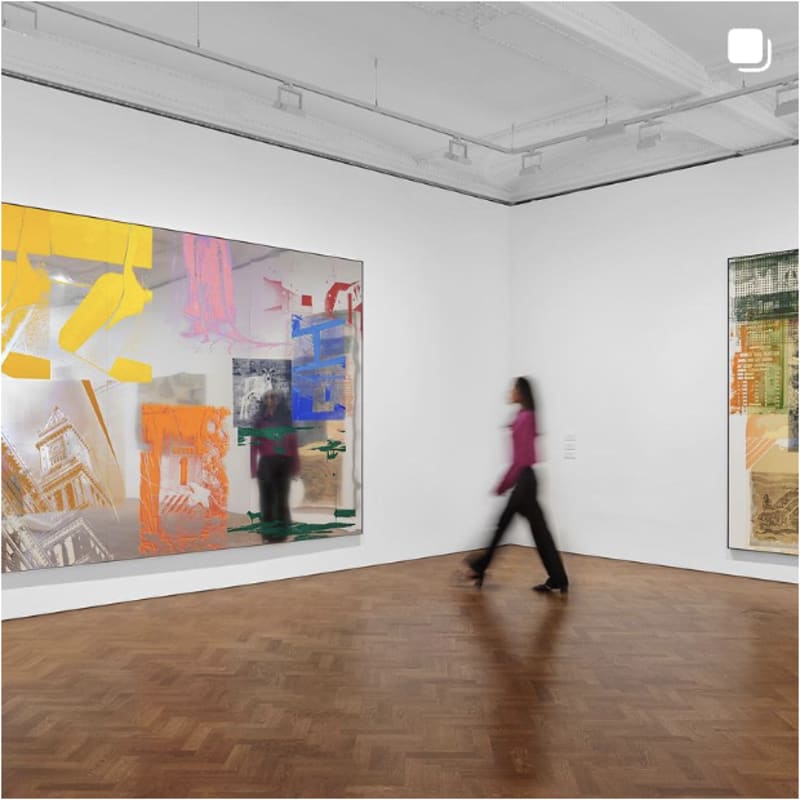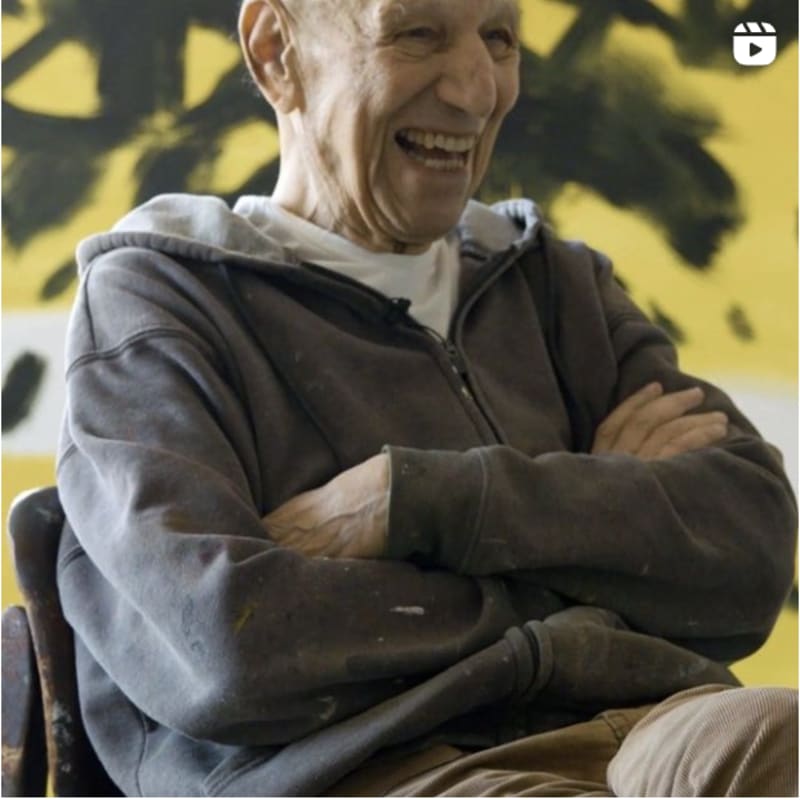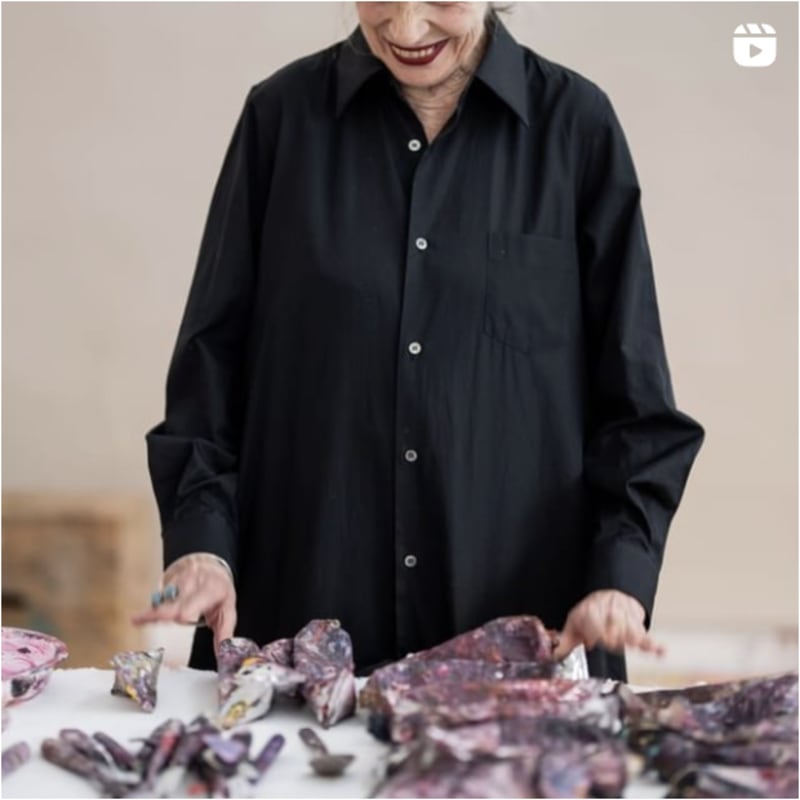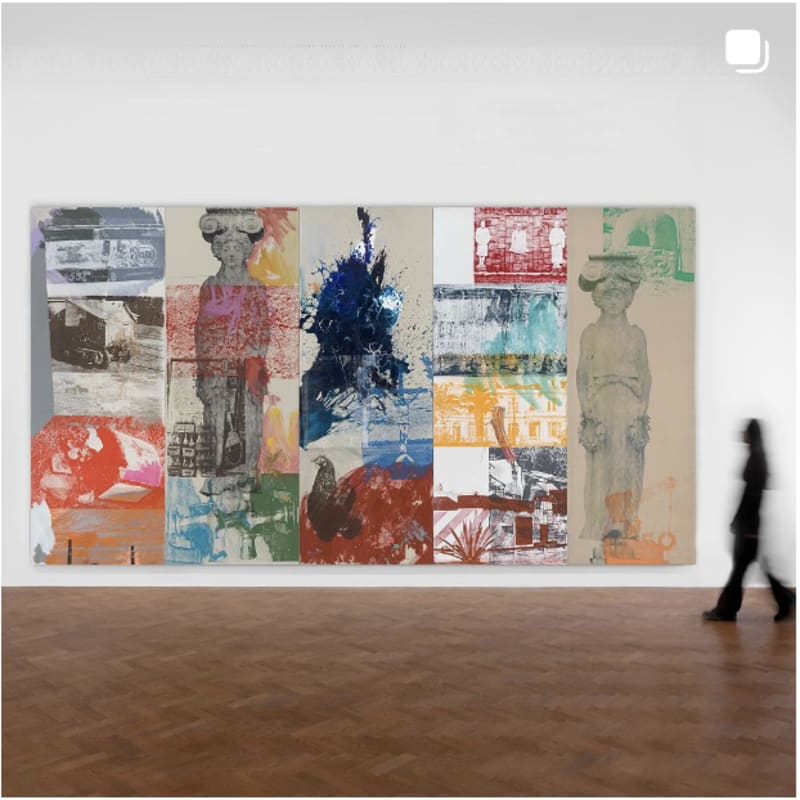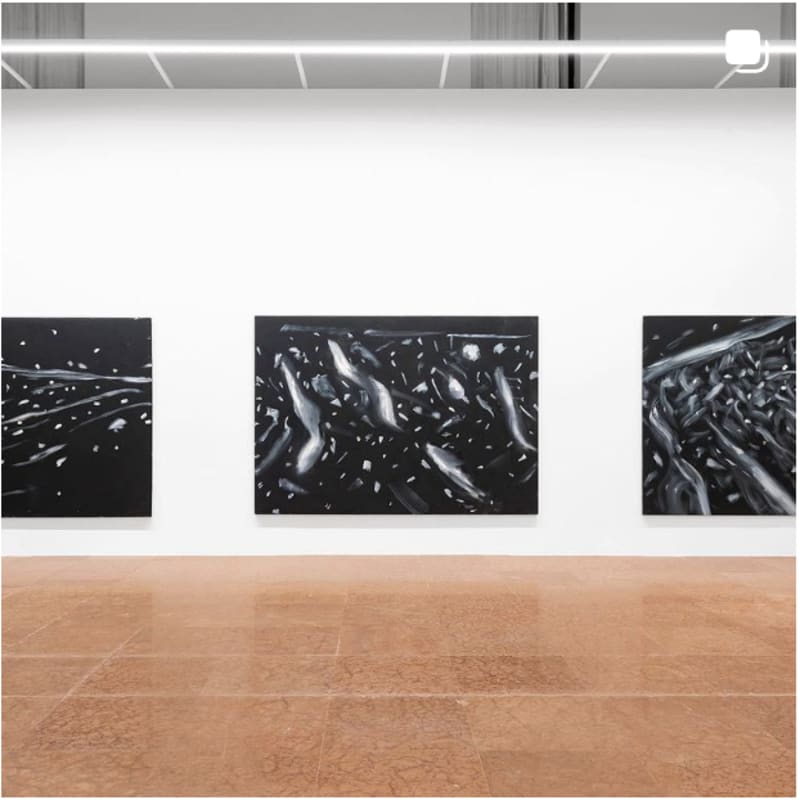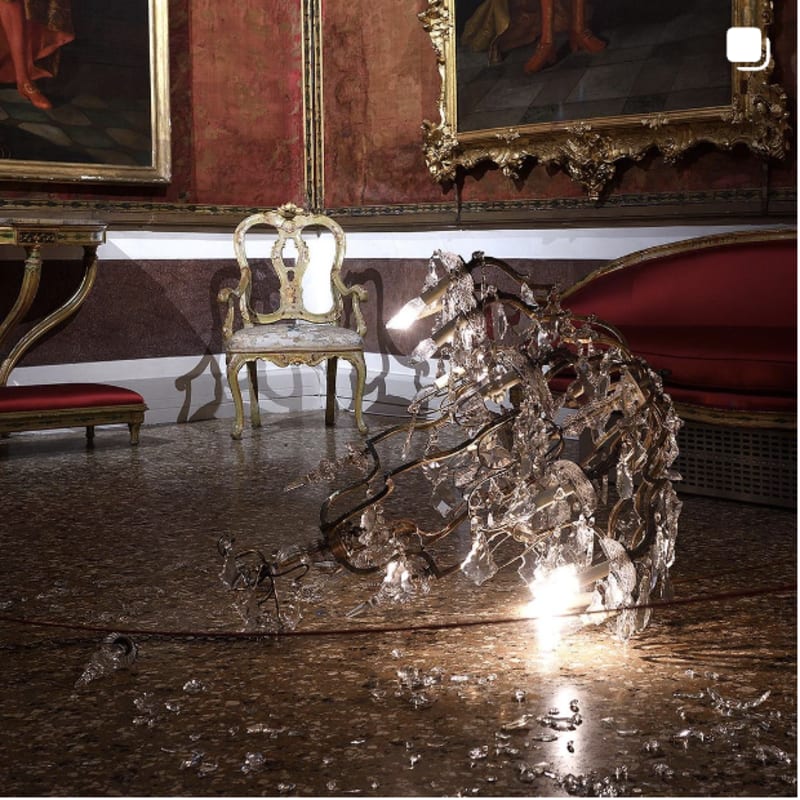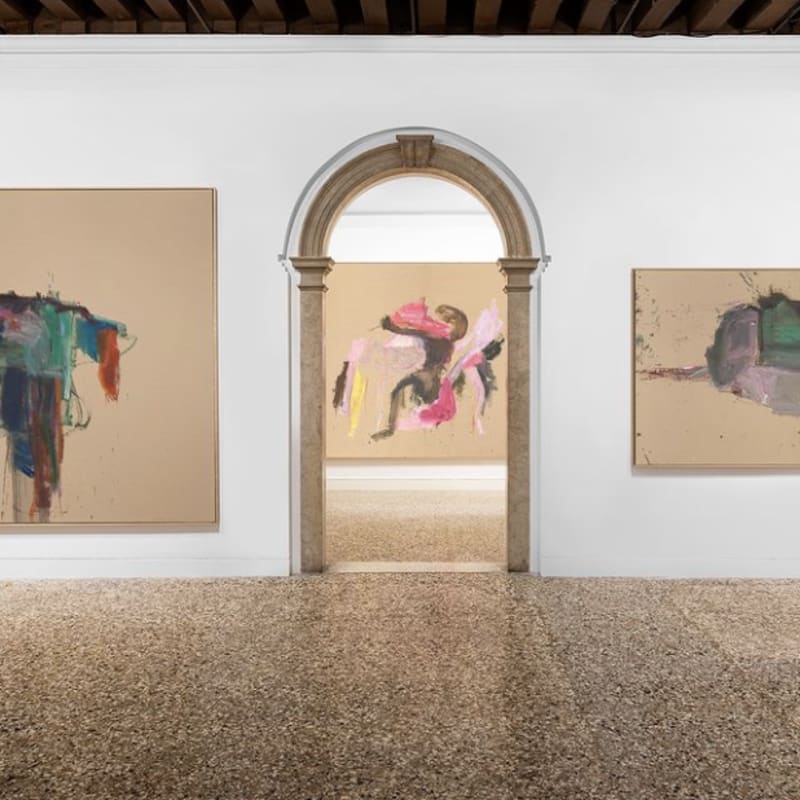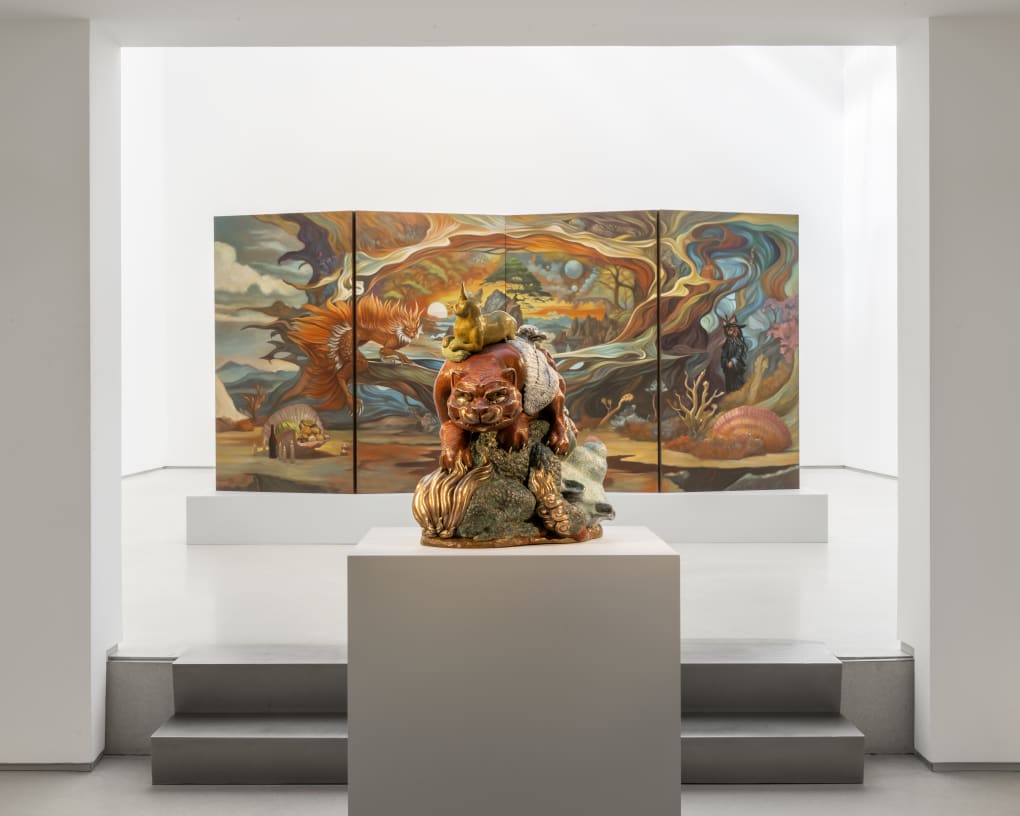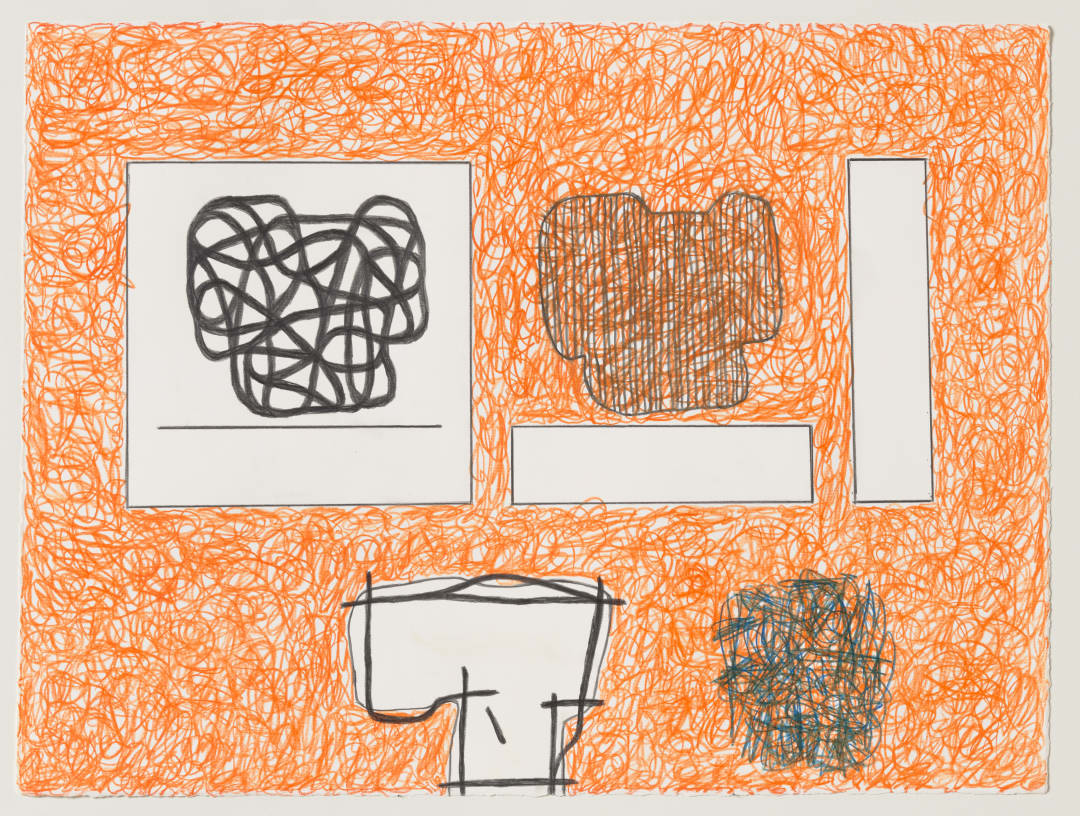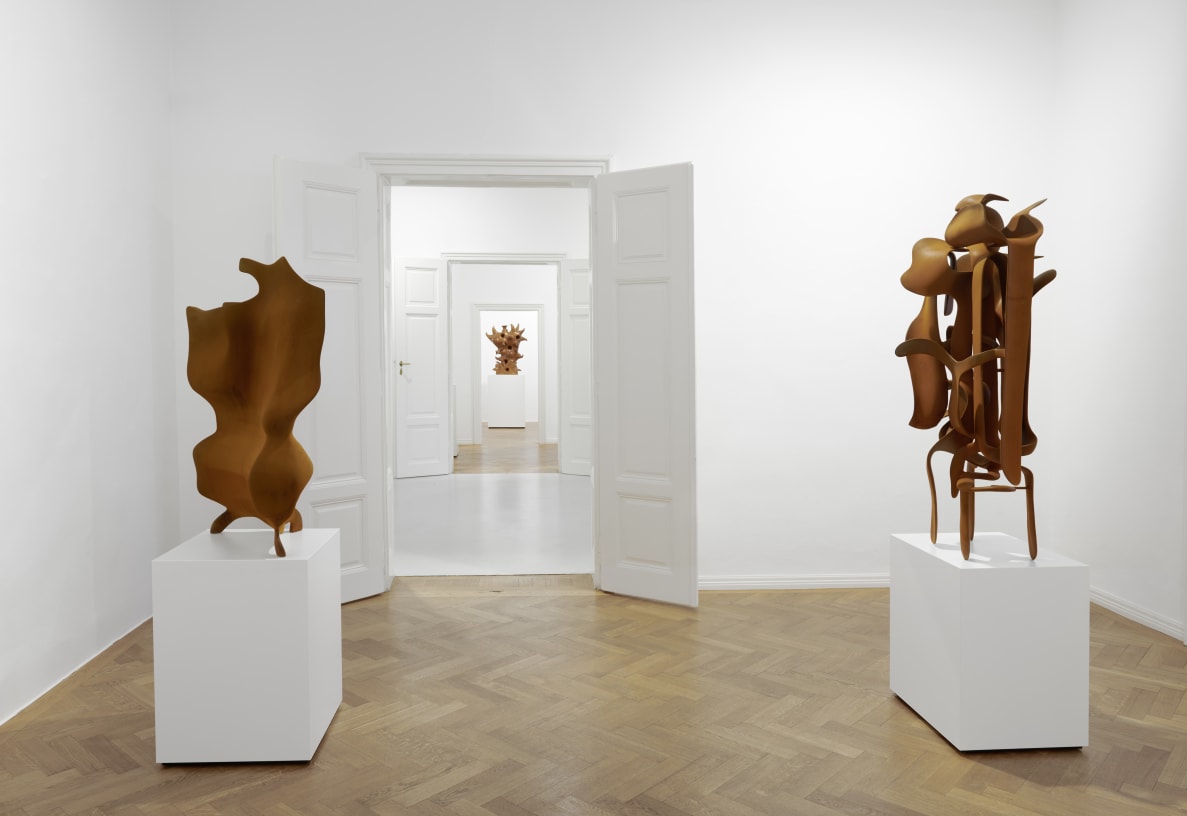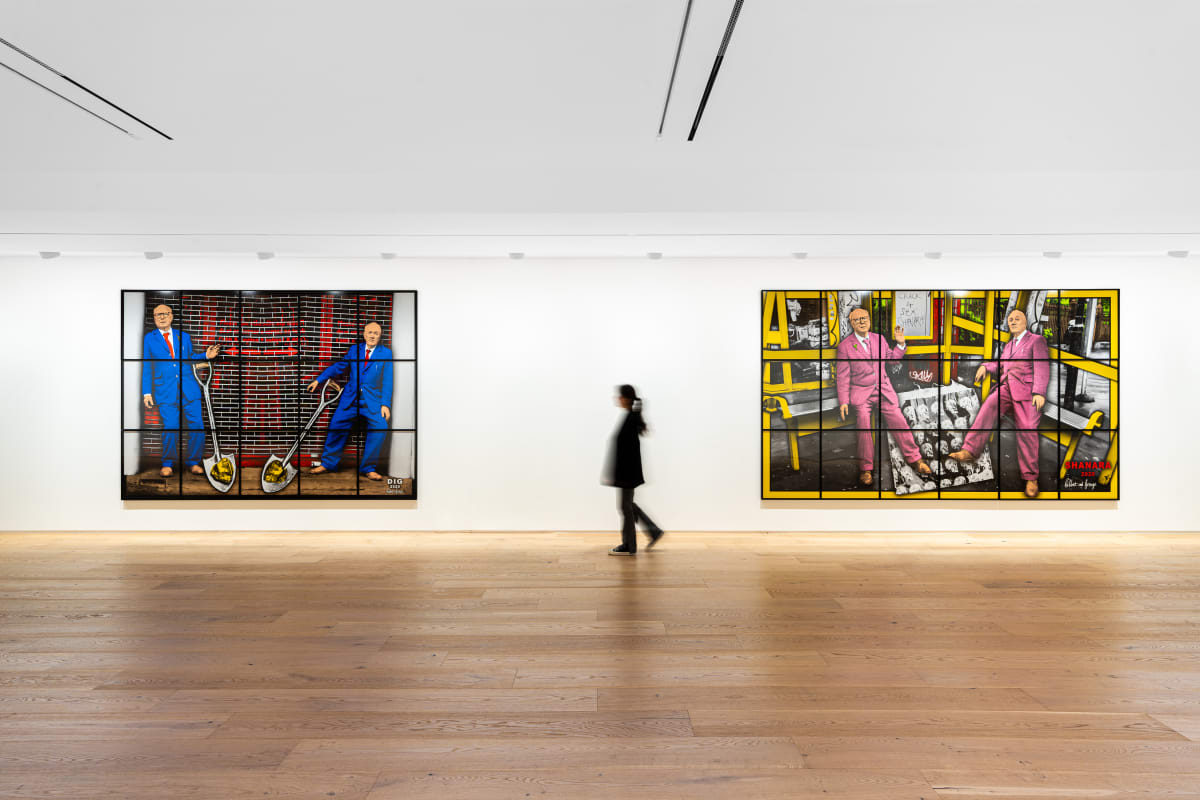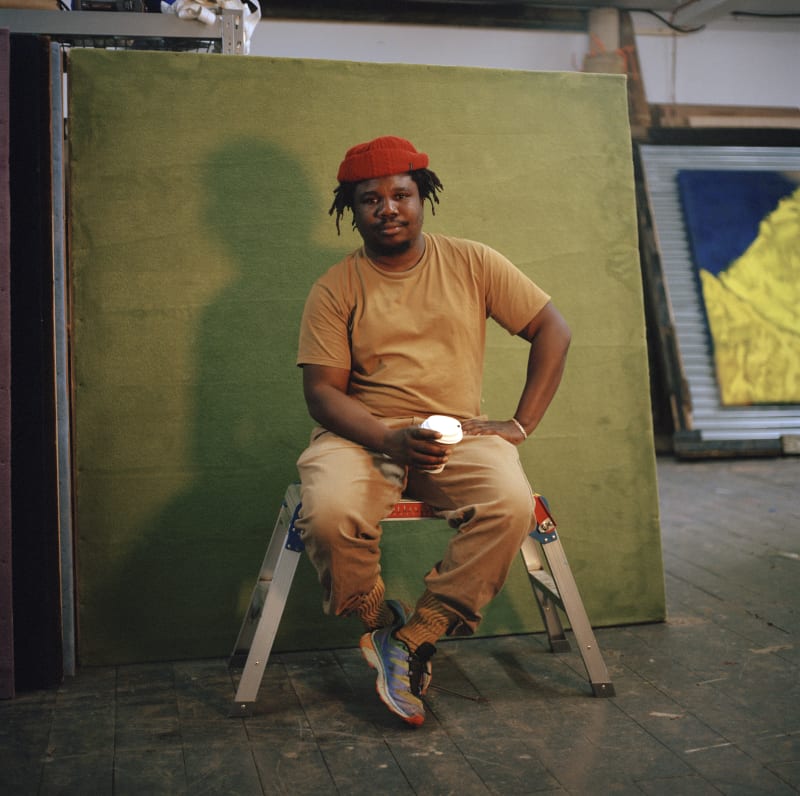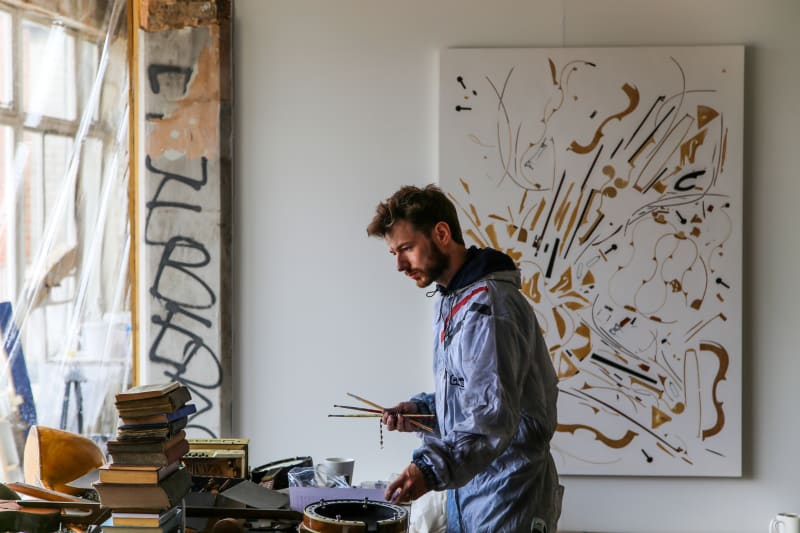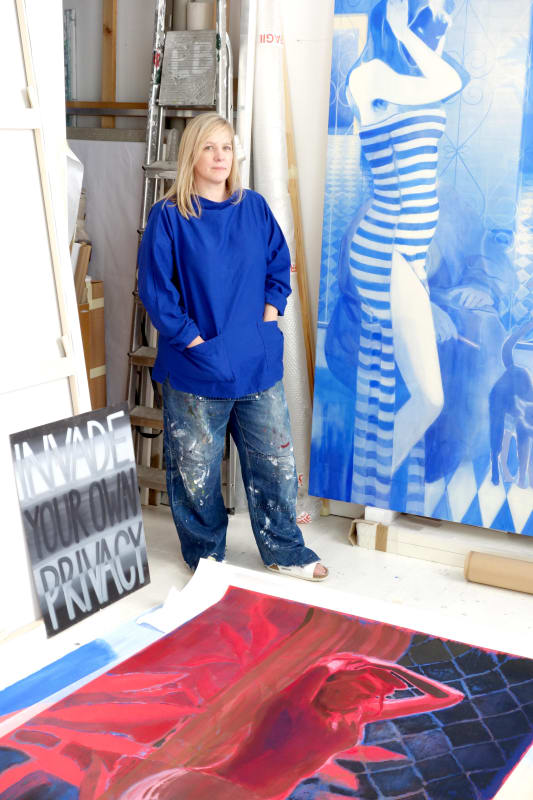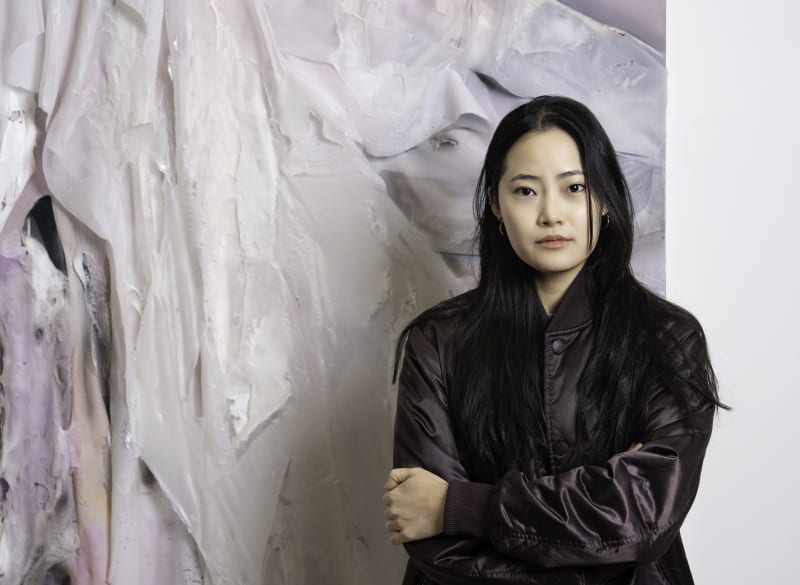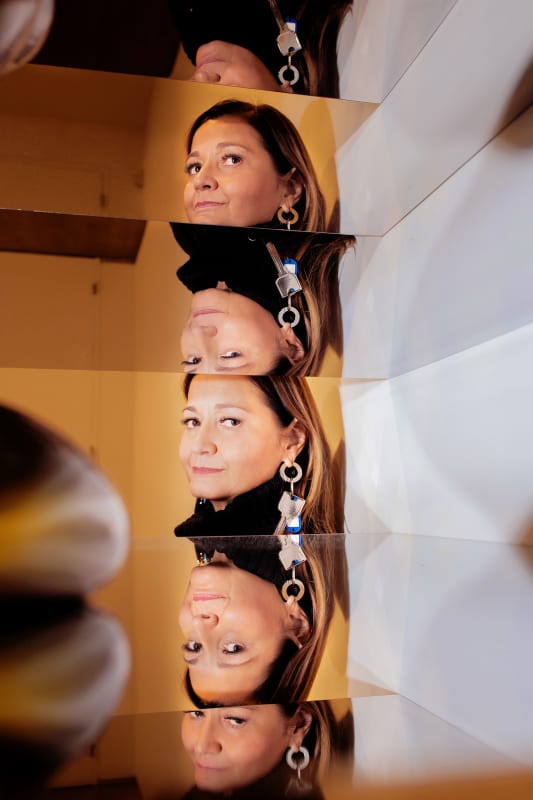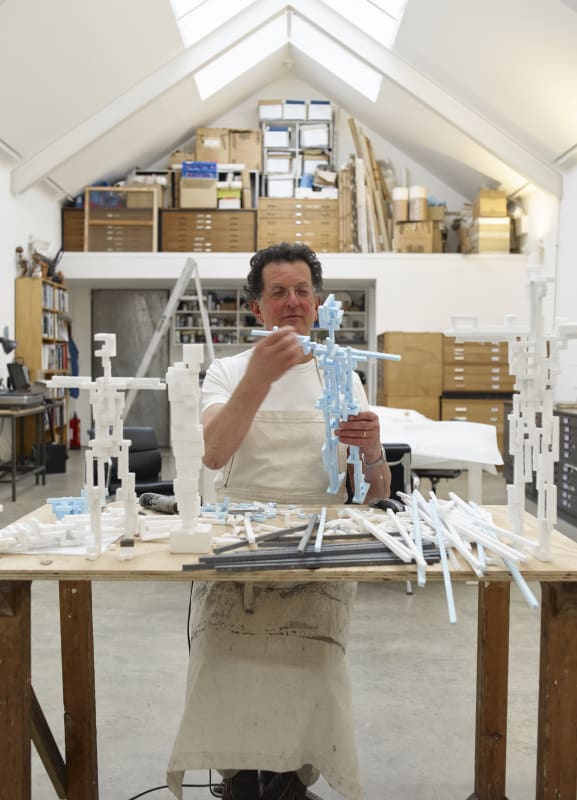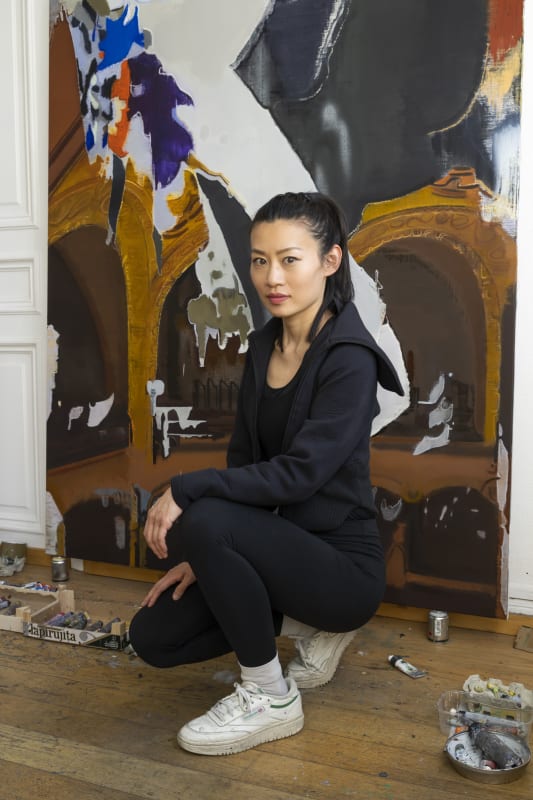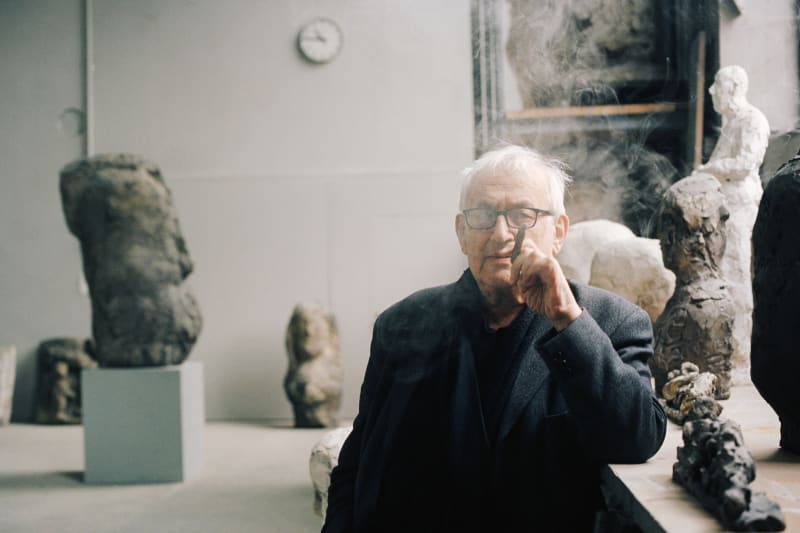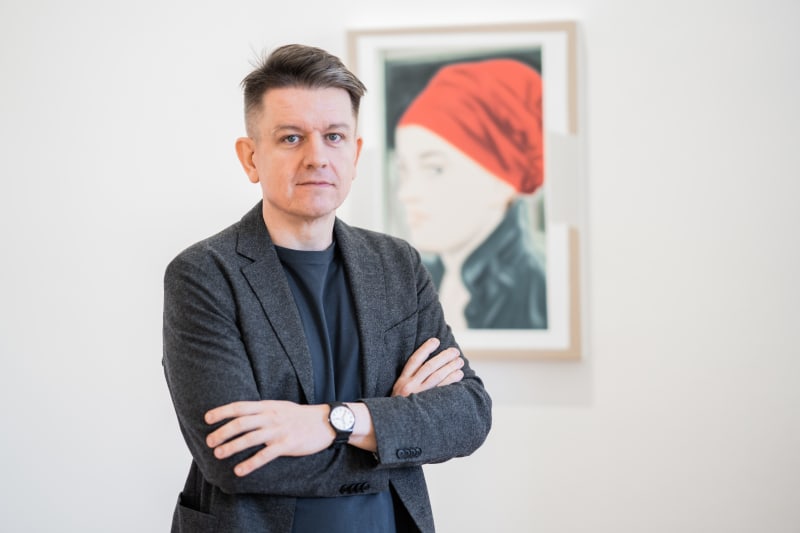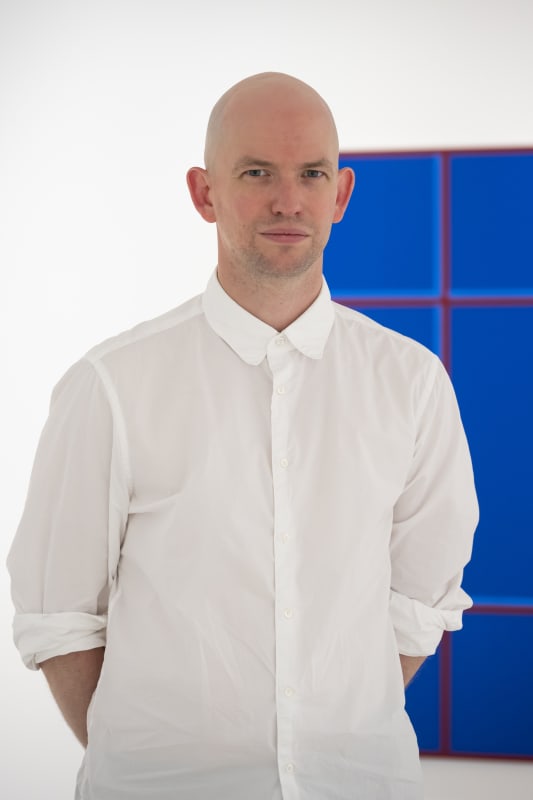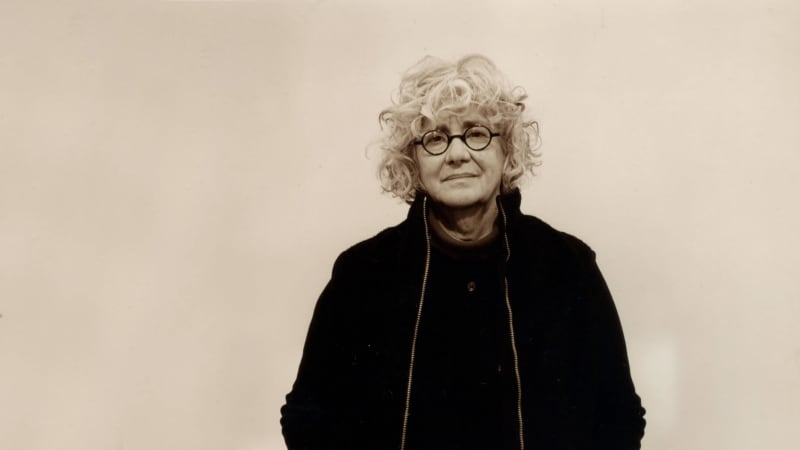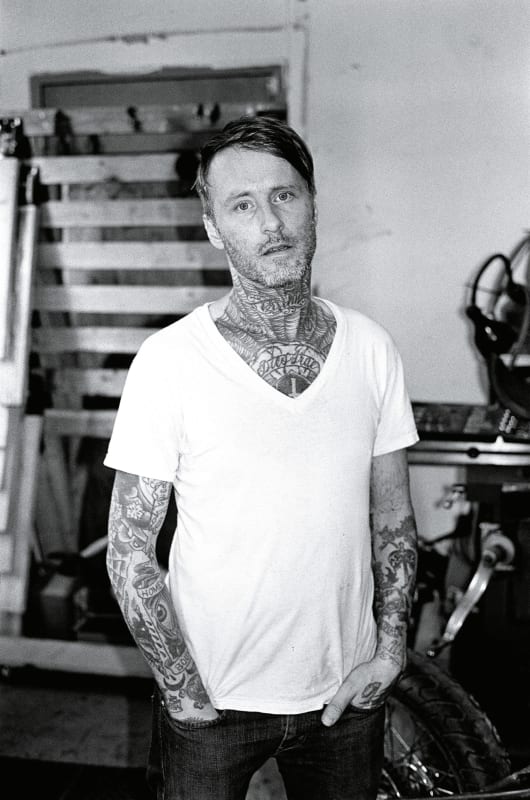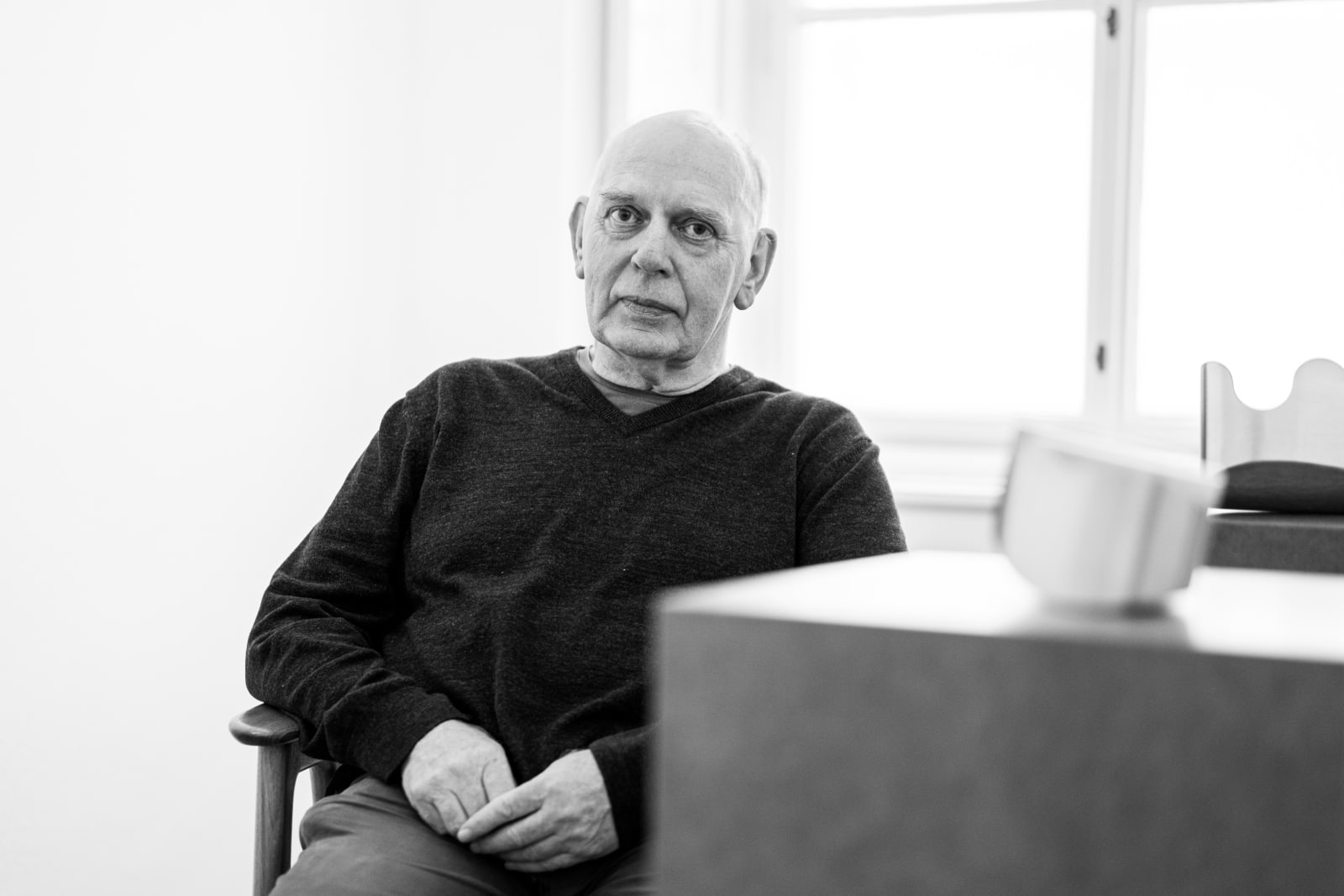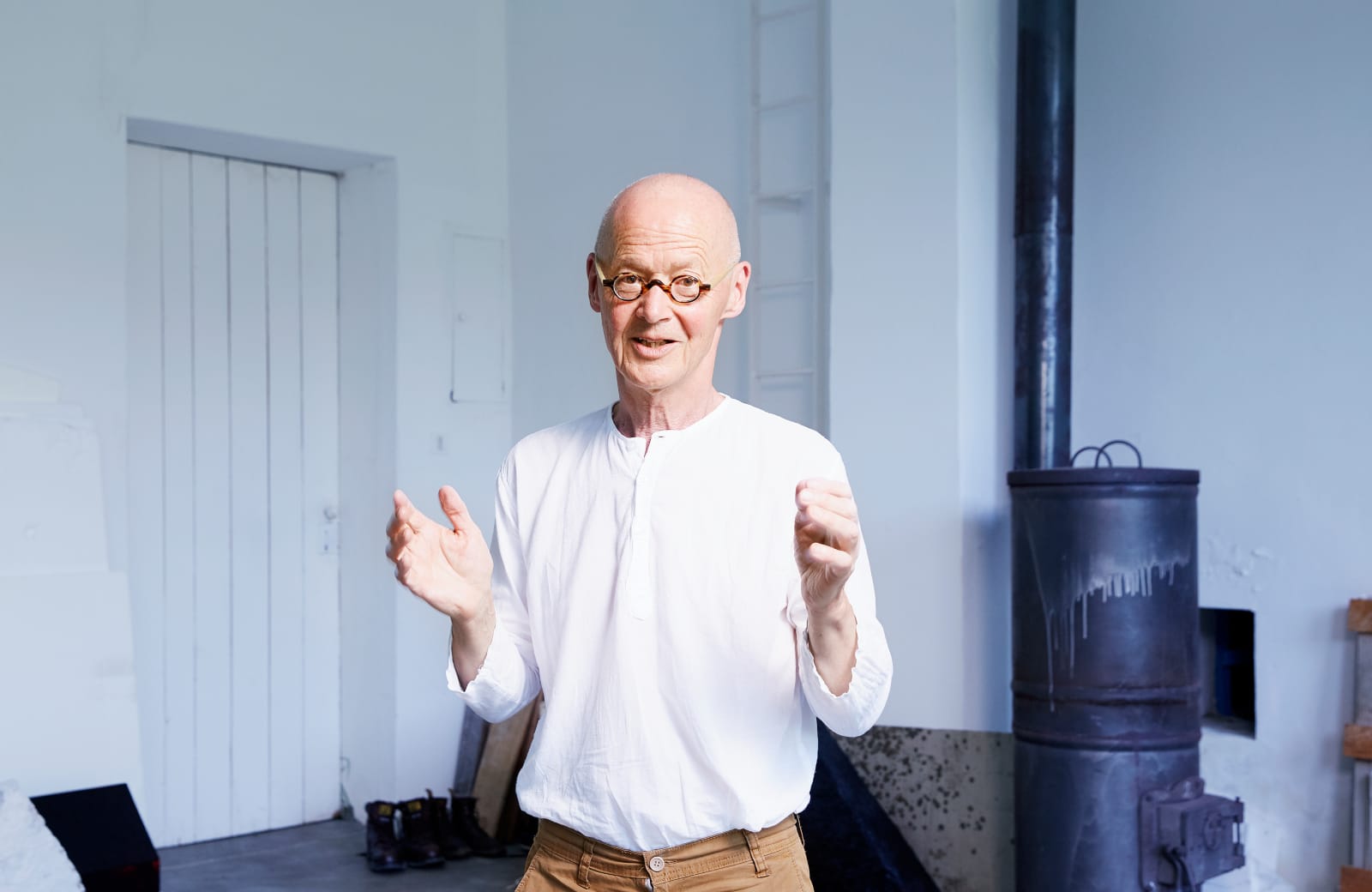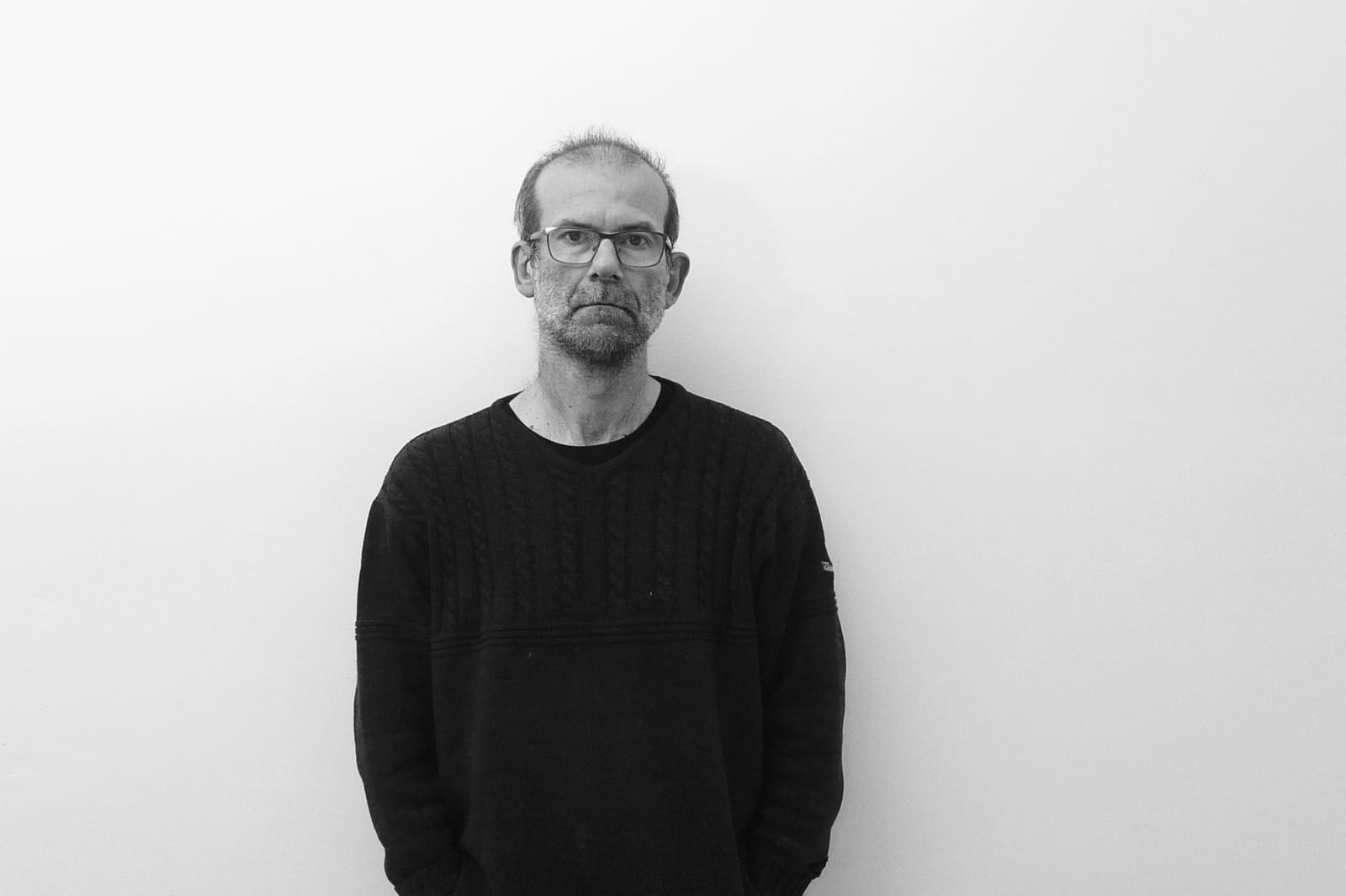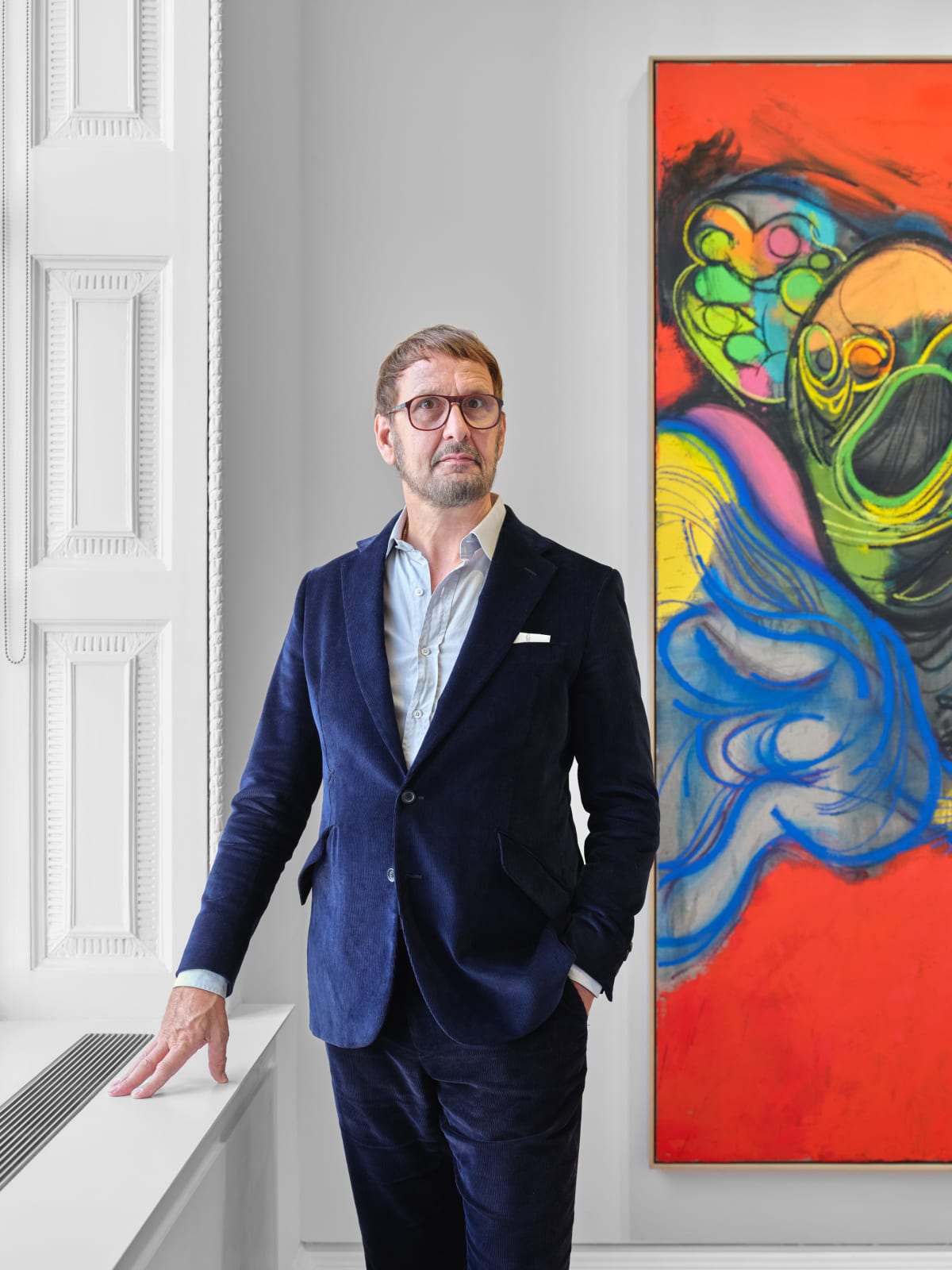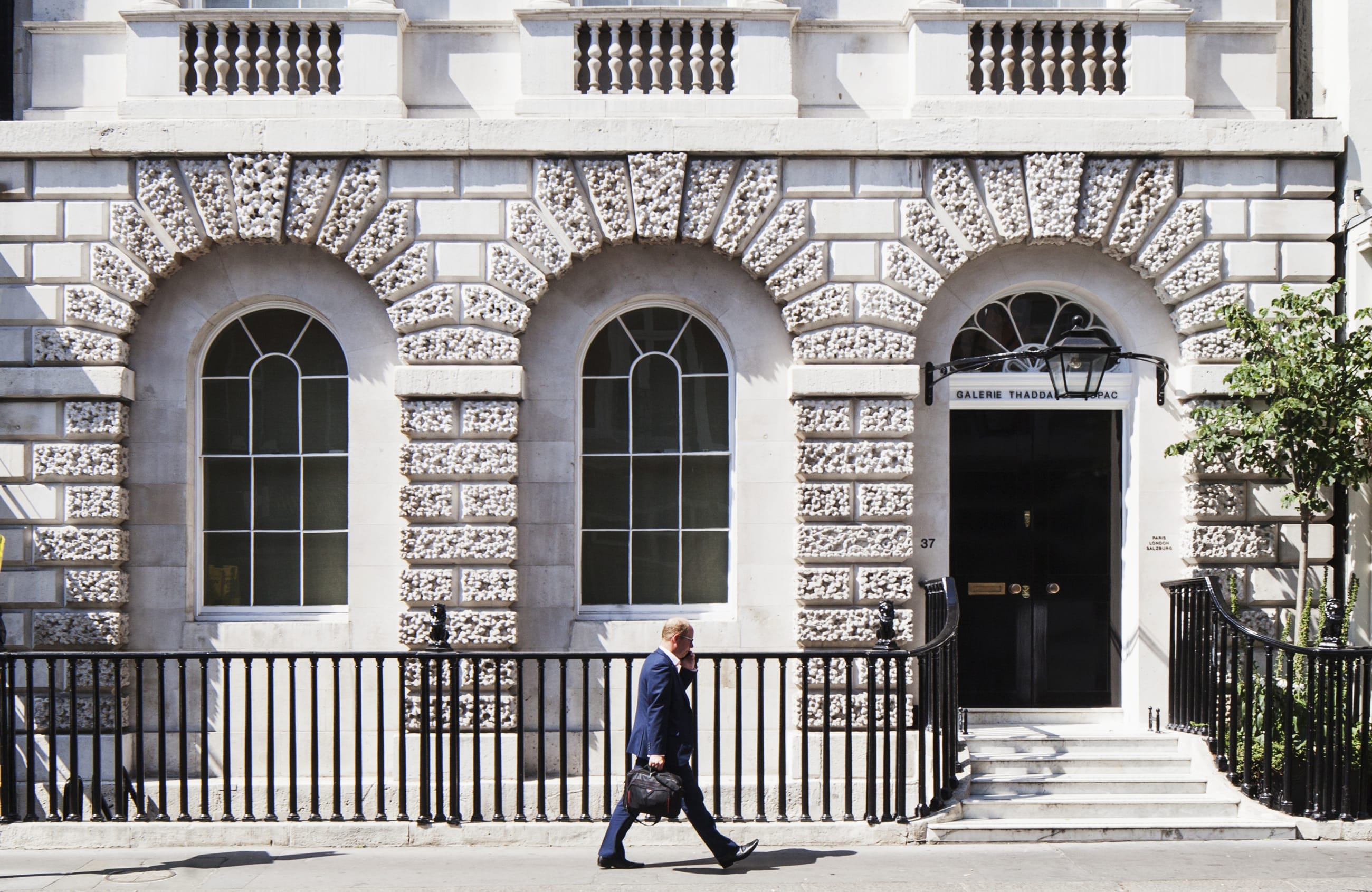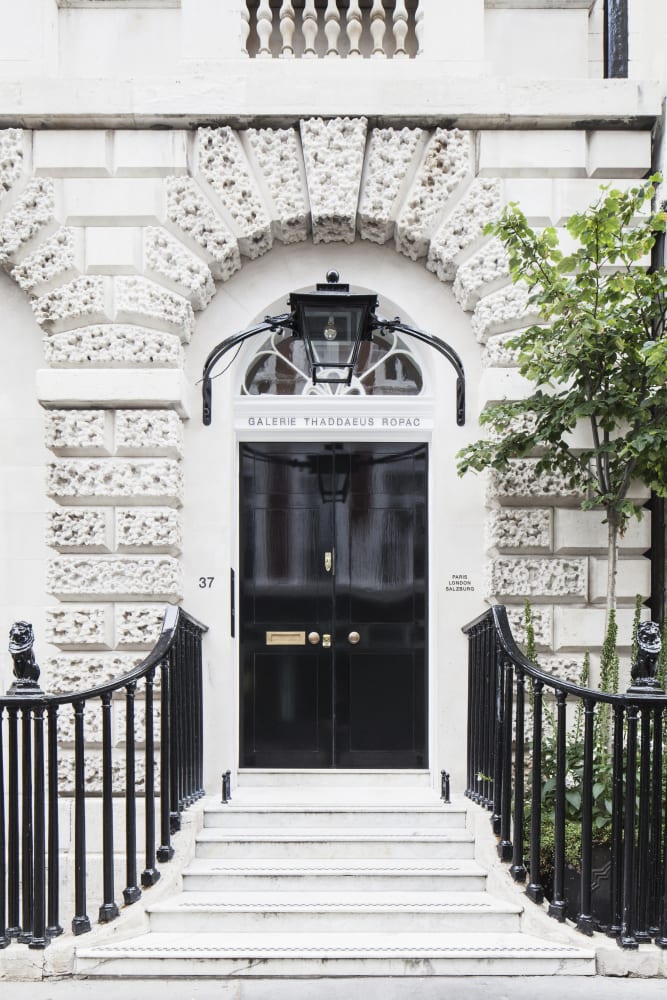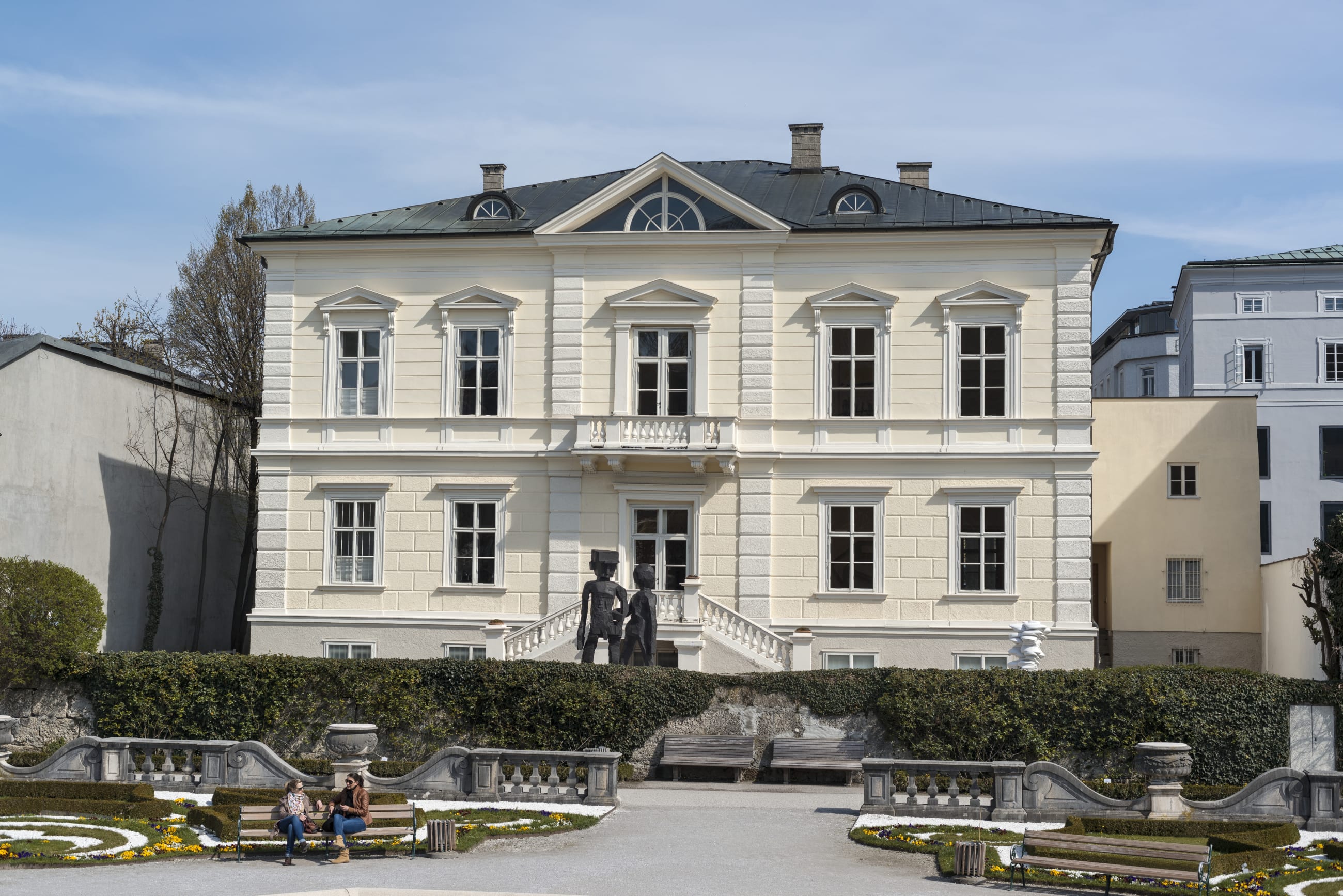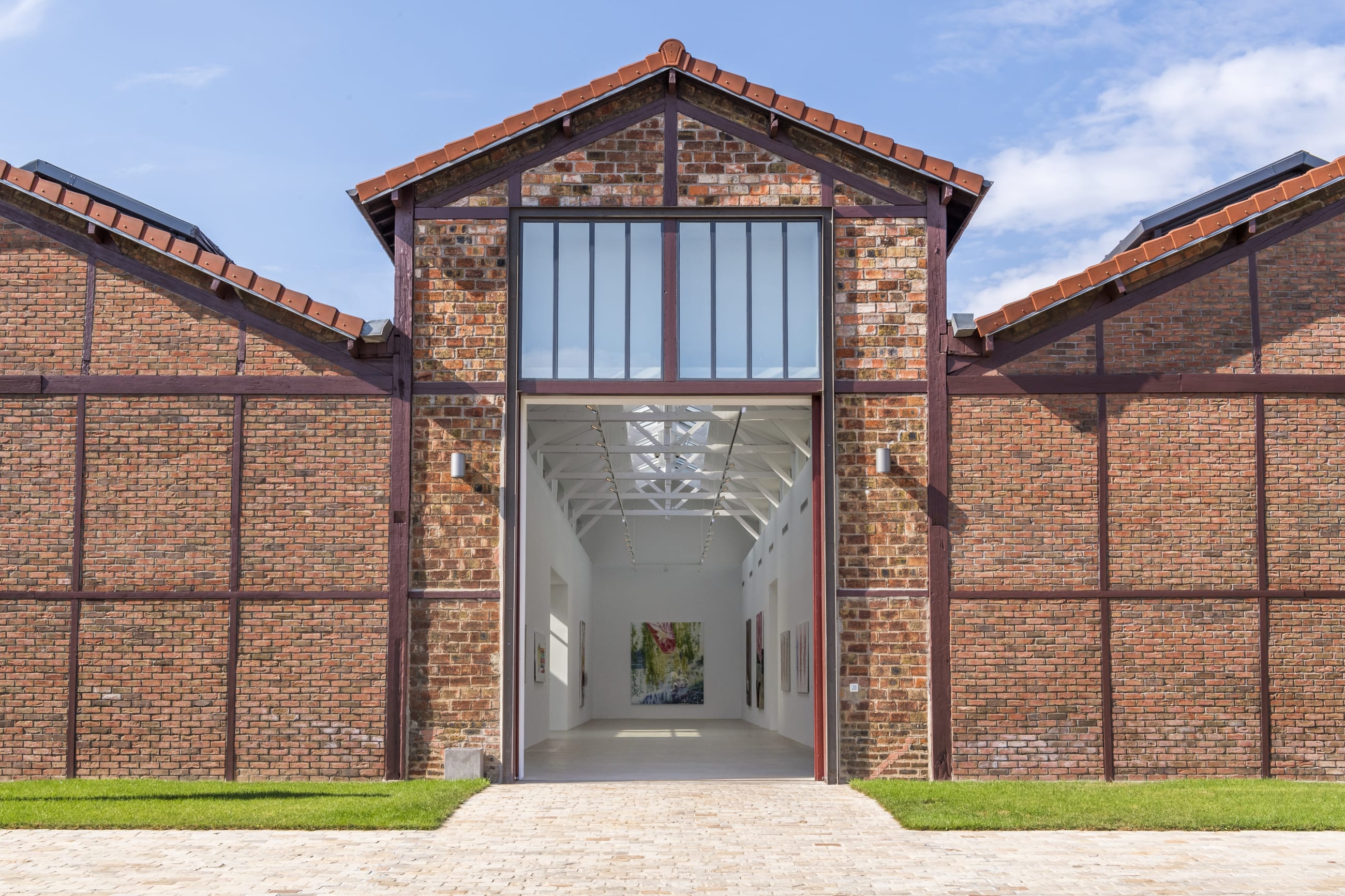
Among Richard Deacon's most recent works are a group of small-scale ceramic sculptures, a medium the artist has been associated with for over 20 years. Marked by their shiny, glass-smooth finish, these works manifest the artist’s preoccupation with surface, form and colour. The final effect of the glazed surfaces is only revealed after the firing process, introducing an element of chance to his practice, otherwise usually governed by control. The artist explains: ‘Colour is part of the process, but you can’t tell what the glaze will look like once it is fired. What you see is never what you get and that is liberating.’
Richard Deacon
Made Of This #3, 2023
Glazed ceramic
11 x 43 x 33.5 cm (4.33 x 16.93 x 13.19 in)

The polygonal shapes are accentuated by prominently coloured rims, rendered in contrasting hues. ‘They are rather succulent as objects,’ says the artist. ‘A lot of the ceramics I’ve made haven’t been quite so delicious, as it were, so sweet.’
Richard Deacon
Made Of This #4, 2023
Glazed ceramic
11.5 x 36 x 37.5 cm (4.53 x 14.17 x 14.76 in)

I’ve been thinking about colour on the surface of stainless steel. Maybe if you put the colour on and took it off, that could give you an interesting surface. The amount of colour you see changes according to your position. The painting isn’t doing anything to protect the surface, it’s stainless steel, it doesn’t need that, but we’re putting a pattern on the surface which introduces a colour. I suppose it identifies them, individually.
— Richard Deacon
Richard Deacon
About Us (Green), 2023
Painted and lacquered stainless steel on mild steel base, 389 kg
146 x 76 x 62 cm (57.48 x 29.92 x 24.41 in)

Under The Weather #3 constitutes a precisely engineered, intricate construction, characterised by its twisting and sensuous composition. Seeming at once fixed and fluid, the complex shape created by steamed wood components explores the physical qualities of the material, testing out the potential forms that can be achieved through the act of fabrication.
The effect of the surface is of vital importance to the work and the holes created by screws have been fitted with wooden pins, achieving the effect of patterns of tiny circles that interrupt the effect of the wood’s natural grain. ‘Gradually the surface has become important and I have come to think that it should be unbroken, not that I want the trace of work done removed, but rather that it all happens on the surface,’ says the artist.
Richard Deacon
Under The Weather #3, 2017
Steamed wood
348 x 120 x 115 cm (137.01 x 47.27 x 45.28 in)

The sculptures are accompanied by a new and unprecedented series of drawings, which Deacon creates on a tablet computer. Restless when it comes to drawing, the artist is particularly interested in finding new ways in which the surface and the means of making the marks interplay. In the case of this new series, the unforgiving surface of a tablet screen and the artist’s bare finger were ‘an interesting combination and sparked a development.’ The designs are then applied to polyester fabric, which lends the drawings materiality and results in haptic and unconventional wall objects.
Richard Deacon
Motif #46—49, 2023
Sublimation printing on polyester
Each 39 x 39 cm (15.35 x 15.35 in)

A group of small-scale stainless steel works from Deacon’s Tread series are distributed rhythmically around the gallery space. Consisting of round, organic shapes, featuring a distinctive wave-shaped surface, the works are characterised by both their soft curves and their sharp cut edges, which, together with the highly polished surface, gives the works a workable, almost malleable quality. ‘The works have this rocking relationship to the ground’ explains the artist. ‘I got very interested in the way that these objects sat on the ground.’ Typical of Deacon's enigmatic titles, Tread can be interpreted in a number of different ways. Often playful, deliberately ambiguous or strikingly associative, they are nevertheless never intended as descriptions or explanations.
Richard Deacon
Tread #1, 2021
Stainless steel
8.5 x 25.3 x 9.2 cm (3.35 x 9.96 x 3.62 in)
There’s some connection between the way the steel is treated, the way that the surface is treated on the ceramic works, and the way that the patterns appear on the textile works. They’re in conversation with each other. — Richard Deacon






